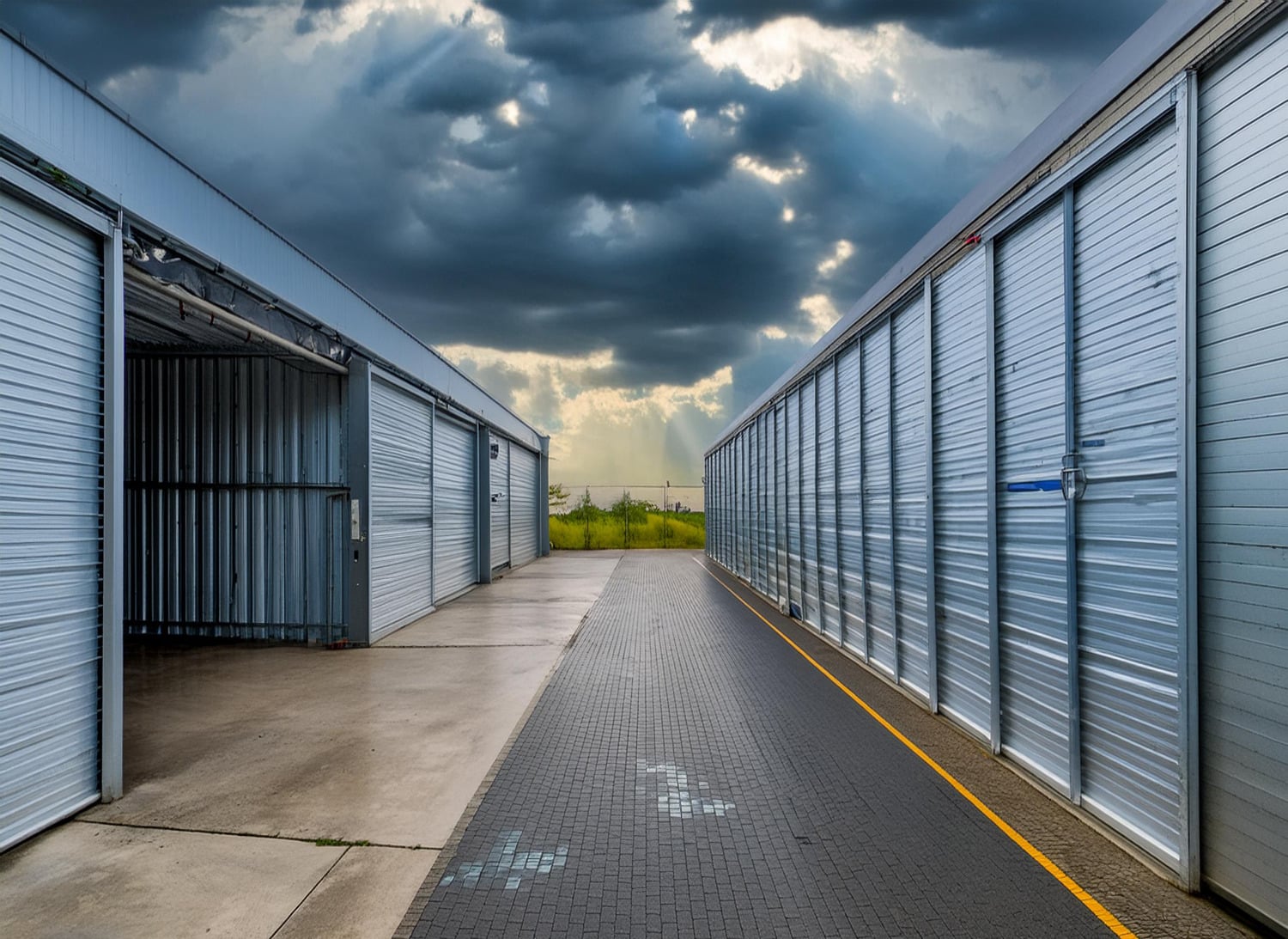How to Protect Storage Space from Storm?

Storms can be very destructive, causing great damage to property and infrastructure within a short period. The thought of protecting your valuables while they are in a storage rental might be restrictive, but there are a few measures that one can take to keep your stuff safe. Whether you’re renting a storage space or you own a storage facility, there are several steps you can take to make sure your valuables stay safe when the storm hits.
Continue reading and learn the top ways to get your storage space ready for the storm. We’ll cover everything from insurance advice to practical steps you can take to limit the damage. Stay with us to learn how to protect your storage space from the storm.
Essential Tips to Protect Storage Space from Storm
These tips can help protect your belongings in a storage unit from storm damage.
Understanding Insurance Coverage
It’s important to make sure your storage facility is ready for any storms that might come its way. One big part of that is making sure you have the right storage unit insurance. This means you need to check your insurance policies and the contracts you have with your tenants.
You may want to speak to a lawyer to ensure you’ve covered all your bases. They can assist you in comprehending what your insurance covers and whether there are any clauses in your contracts that may cause problems later. It’s all about making sure everyone knows what’s expected and what’s not so there aren’t any surprises if things go south following the storm.
Inspecting and Securing the Facility
Make sure to inspect your storage site prior to the storm to ensure it is safe. Look around and check for any potential problems when the storm hits. For instance, check for trees or large branches over your storage building since they might fall on the roof during a storm. In addition to the above, check the building itself attentively. Ensure that there are no weak spots that might deteriorate in a storm. This is crucial because the roof is commonly the first thing that gets damaged.
If you notice any potential risks in your storage facility, such as loose tiles or floor or signs of rodent activity, it’s important to take action before the storm hits. Repair any damage and take proactive measures to avoid rodent damage. This can help minimize the risk of damage to your belongings during the storm and ensure that your storage space remains safe and secure.
Dealing with Utilities
In most cases, one is never safe when a storm hits; you will likely lose power and other utilities. Therefore, it is always a good idea to have backup power generators, especially if you have climate-controlled storage units. Always maintain the generators by checking them regularly to ensure they will work when needed.
Also, have a plan in place to manage water supply disruptions and other utility challenges that might arise during a storm.
Documentation Backup
It is important to ensure the safety of your important documents, especially during severe weather conditions. One way to do this is by using cloud storage for digital files. By saving copies of contracts and customer information online, you can access them anywhere, even if your physical documents are damaged or lost.
Keeping physical documents in waterproof containers is also a good idea to protect them from water damage. And don’t forget to back up your information regularly to ensure you don’t lose anything important.
Pre-Storm Preparations
When you know a storm is on its way, it’s essential to communicate with your tenants so they can protect their belongings. Advise them to wrap their belongings in plastic and elevate them off the ground to keep them safe from water. Secure any loose items within the facility and check that drainage systems function correctly to avoid flooding. Protect electronic equipment by covering them and reinforcing windows to prevent them from breaking due to strong winds.
Taking pictures of your facility before the storm is also a good idea. These pictures can be really useful for storage insurance claims if your facility gets damaged during the storm. Following this step can help reduce the damage to your storage and protect your tenants’ property.
Assessing and Reporting Damage After the Storm
After the storm, it’s important to check for any damage as soon as possible. Take new pictures of your storage facility to see what’s been affected. These photos can help you show the insurance company what happened and make it easier to file a claim.
You should also talk to your tenants and let them know how their storage units are doing. If there’s any damage, give them advice on what to do next. By acting quickly and keeping everyone informed, you can start fixing things and getting back to normal as soon as possible.
Final Words
Although it’s impossible to make a storage facility completely safe from storms, taking these proactive steps can really help reduce damage and speed up the recovery process. Whether it’s getting your insurance and contracts in order, making sure your facility is in good shape, or communicating well with your tenants, every little bit helps.
Just remember, when it comes to storms, it’s better to be too prepared than not prepared enough. So, by taking these proactive steps, you’re doing your best to protect your storage space and keep everyone’s belongings safe.
 File
File